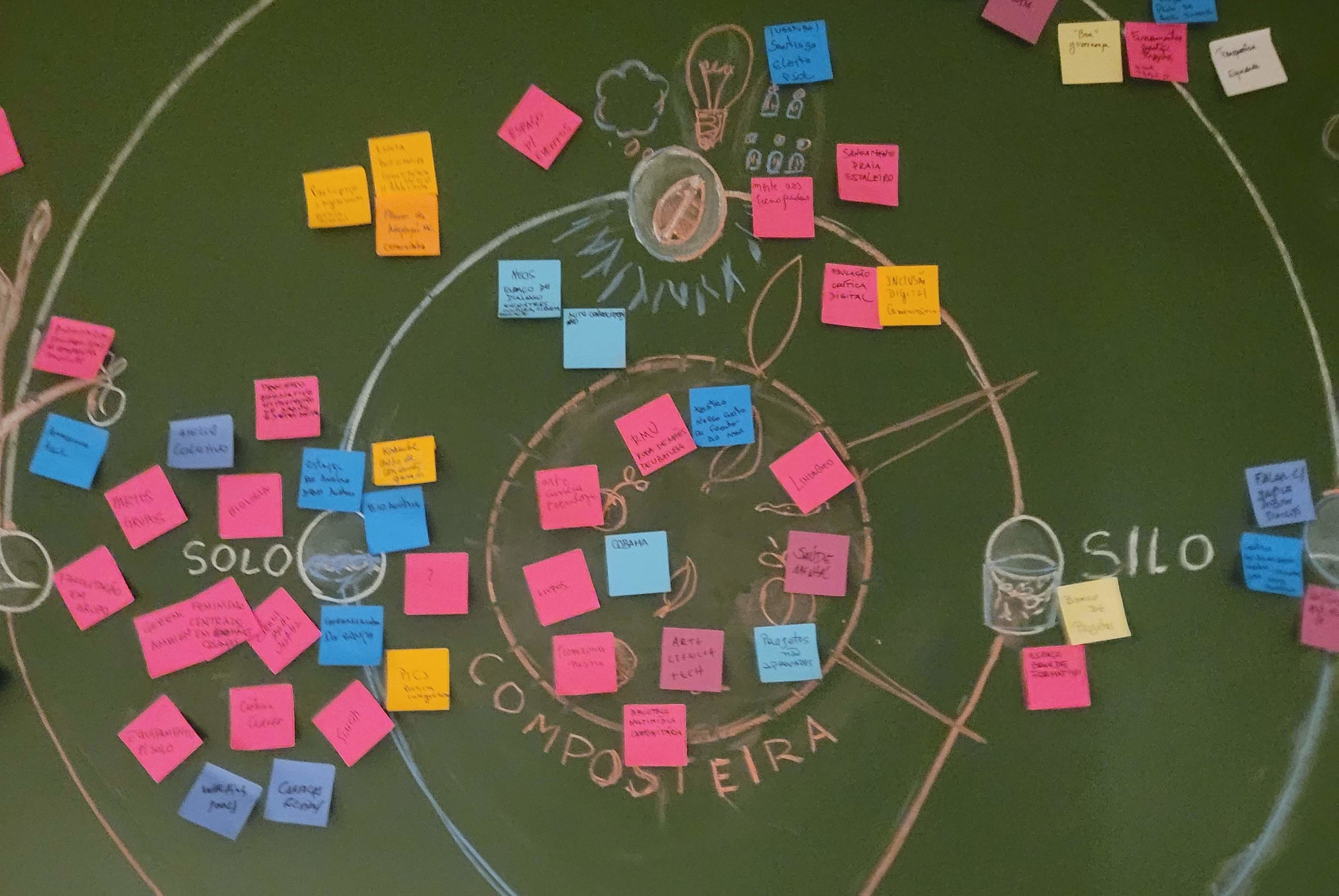
On a Saturday of perfect tropical summer weather, semente returned to Instituto Neos, on the northern coast of Ubatuba, in Brazil. As a sort of meta-spiral, we were starting another turn of semente’s own cycle of seeding, tending and regenerating itself. After all, semente was created in partnership with Neos, and its first drafts were refined on workshops during Tropixel Sementes 2022, on that very place.

Having gone through some years of occasional development - especially having just finished our residency with GAIATO -, we had quite fresh ideas to put to test. We invited people interested on potential projects of science, culture, society and future to join us for an exploratory session, using the name ubatuba.cc. That name and URL were never associated with a particular project, except for a wiki website that I used in the past to organise and document many projects and initiatives. The idea for the day was to see whether semente could be used to visualise potential cooperation between people, collectives and organisations that were not yet collaborating.
Using the semente vocabulary to describe it here, we have a fertile soil in terms of past projects in Ubatuba. For instance, UbaLab experimental laboratory and the collaborative incubator inc.ubalab, as well as the open science research Ciência Aberta Ubatuba and LINDA-Geo, a project about open georeferenced information in the region. Other relevant elements of our soil were the science and culture centre / co-working space ninho and events like aforementioned Tropixel, as well as OCUPE and Tropical Tech, among many others.

The session started with an introduction of semente, its history, recent developments, and current state. Then, all participants were invited to add their own projects and ideas to the blackboard. We had a break and returned to discuss a bit further. The group experimented with describing their ideas on regenerative terms, and some potential synergies started to appear.


Personally, I decided to focus my attention on SiMCiTI, a participatory legislative draft to establish a Municipal System for Science, Technology and Innovation in Ubatuba. The project was sidelined by political dispute, but its principles remain relevant to this day. The conversation and exchange with others made me see ways to potentially bring it back to discussion and eventually influence future developments in the region.


The meeting was dynamic, and we received positive feedback from participants. However, I think we still need to improve on the intentionality of post-interaction analysis and reframing. In other words, once participants have spread their post-it notes on the board, we need to follow a clear process of going through their ideas, repositioning them, and asking follow-up questions. During that session we did occasionally do that, but it was very informal and improvised. semente needs a bit more attention on those dynamics, now that we are pretty much aligned on the shapes of the vectors and their phases.
A focus of attention during the conversation was the newly found centrality of the compost bin in the system. Through the two weeks of residency at GAIATO, we repositioned the compost bin many times, but ended up deciding to keep it outside any of the three vectors. That’s because we understood that the compost bin can be actioned on either - seeding, tending, regenerating. The conversation in Neos explored the similarities and differences between the compost bin and litterfall on forests - to me, a matter of intentionality. The next iteration of the semente playfield will reflect those improvements.
As for the future of ubatuba.cc, well, I hope the meeting has planted new seeds. Let’s give it some time to sprout and help it grow when the time comes.
